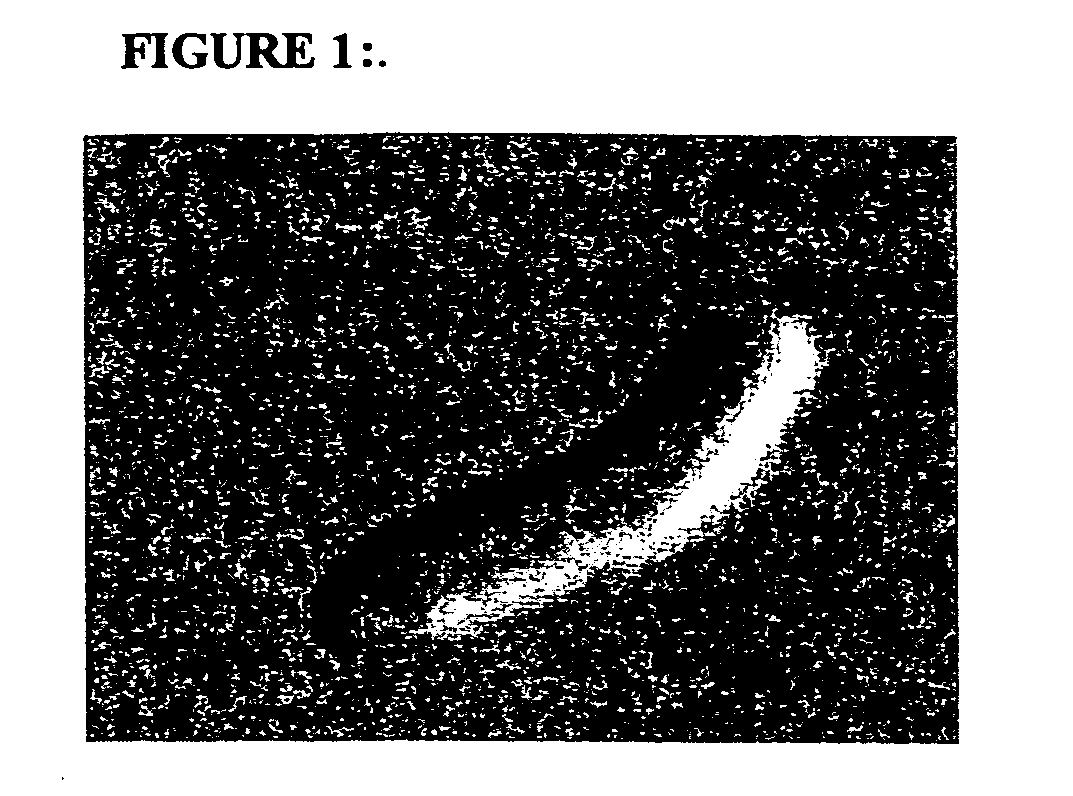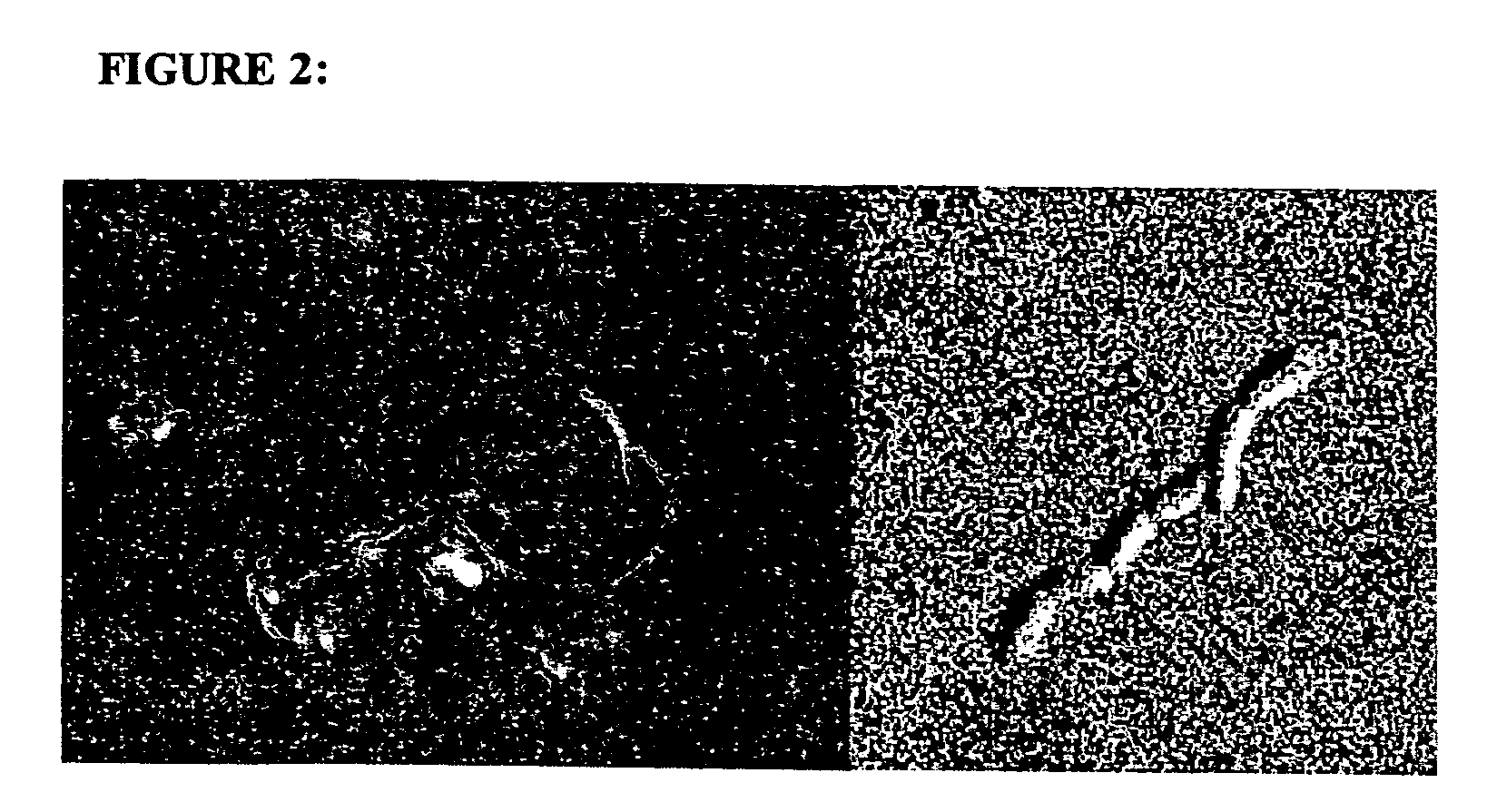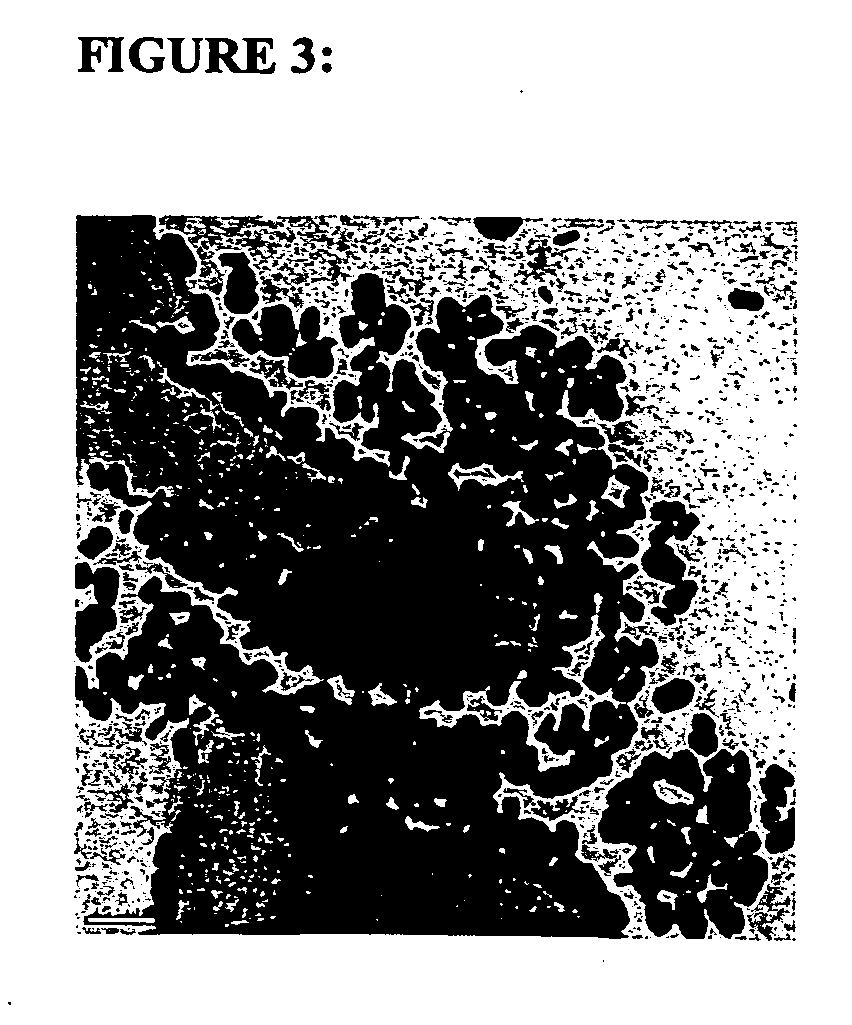Methods and compositions for the treatment of diseases characterized by pathological calcification
a pathological calcification and composition technology, applied in the direction of phosphorous compound active ingredients, metabolism disorders, peptide/protein ingredients, etc., can solve the problem of bcp crystals not being clinically useful, nanobacteria being the most harmful, and blocking that action would seriously harm cells and tissue functions, etc. problem, to achieve the effect of enhancing the efficacy of the other agents
- Summary
- Abstract
- Description
- Claims
- Application Information
AI Technical Summary
Benefits of technology
Problems solved by technology
Method used
Image
Examples
Embodiment Construction
[0047] The invention provides for therapeutic compositions and methods for treating and / or preventing the growth of Nanobacterium and pathological calcifications by administering preparations of calcium chelators, bisphosphonates, antibiotics, antimicrobial agents, cytostatic agents, calcium ATPase and pyrophosphatase pump inhibitors, calcium phosphate-crystal dissolving agents, agents effective against calcium phosphate-crystal nucleation and crystal growth, and / or a combination of supportive agents, and for treating and / or preventing calcification-induced diseases including, but not limited to, Arteriosclerosis, Atherosclerosis, Coronary Heart Disease, Chronic Heart Failure, Valve Calcifications, Arterial Aneurysms, Calcific Aortic Stenosis, Transient Cerebral Ischemia, Stroke, Peripheral Vascular Disease, Vascular Thrombosis, Dental Plaque, Gum Disease (dental pulp stones), Salivary Gland Stones, Chronic Infection Syndromes such as Chronic Fatigue Syndrome, Kidney and Bladder Sto...
PUM
| Property | Measurement | Unit |
|---|---|---|
| Mass flow rate | aaaaa | aaaaa |
| Mass flow rate | aaaaa | aaaaa |
| Mass flow rate | aaaaa | aaaaa |
Abstract
Description
Claims
Application Information
 Login to View More
Login to View More - R&D
- Intellectual Property
- Life Sciences
- Materials
- Tech Scout
- Unparalleled Data Quality
- Higher Quality Content
- 60% Fewer Hallucinations
Browse by: Latest US Patents, China's latest patents, Technical Efficacy Thesaurus, Application Domain, Technology Topic, Popular Technical Reports.
© 2025 PatSnap. All rights reserved.Legal|Privacy policy|Modern Slavery Act Transparency Statement|Sitemap|About US| Contact US: help@patsnap.com



